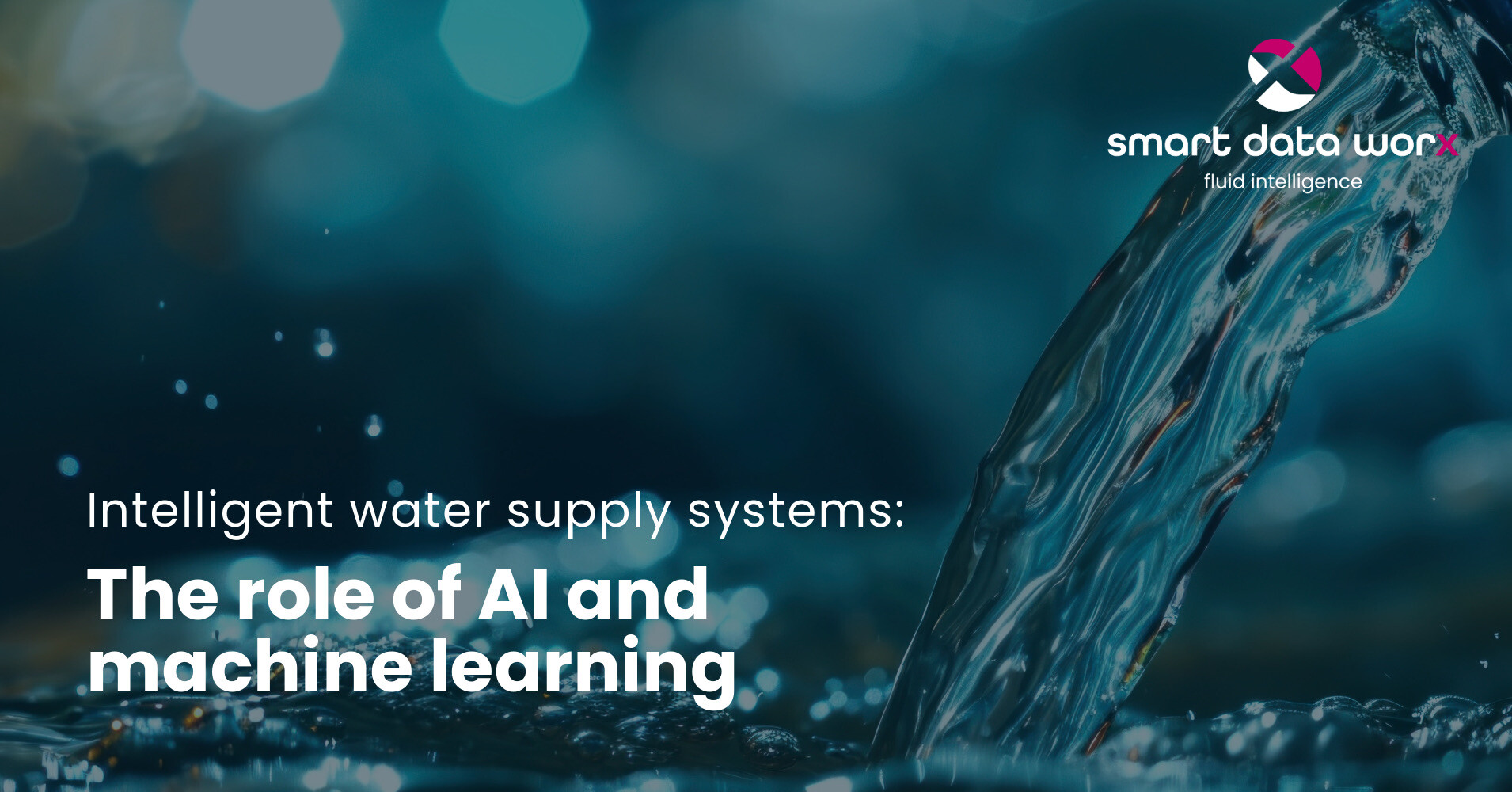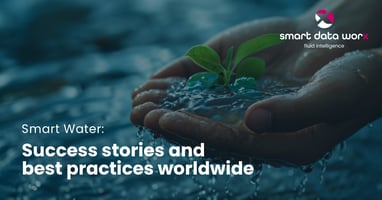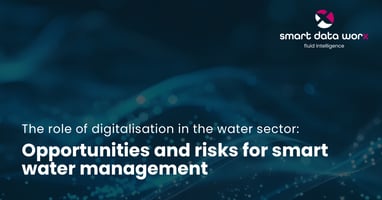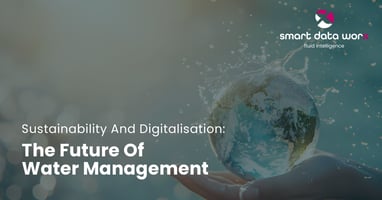The challenge of global water scarcity requires innovative solutions to ensure a sustainable water...
Intelligent water supply systems: The role of AI and machine learning

Water supply is a crucial factor for everyday life and economic development. With increasing challenges such as water shortages, rising demand and environmental changes, the development of innovative solutions for a sustainable and efficient water supply is becoming ever more important. Artificial intelligence (AI) and machine learning (ML) are central to this. These technologies open up a wide range of opportunities to increase the efficiency, reliability and sustainability of water supply systems.
Artificial intelligence in the water supply
Artificial intelligence refers to the ability of machines to imitate human thinking and perform tasks that normally require human intelligence. In water supply, AI can perform various functions, from predicting water demand to optimising water distribution.
- Demand forecasting: AI models can analyse historical data and identify patterns to accurately predict future water demand. This allows water suppliers to plan their resources more efficiently and be prepared for peak times. In addition, AI-supported demand forecasting makes it possible to dynamically adjust the water supply, thereby avoiding oversupply and undersupply. In the long term, water suppliers can also better understand and respond to trends and seasonal fluctuations.
- Leak detection: A large proportion of water is lost due to leaks in the supply network. AI systems can analyse sensor data in real time and detect unusual patterns that indicate leaks. This allows problems to be recognised and rectified more quickly. In addition, AI can continuously learn and improve its ability to detect leaks by learning from new data and previous incidents. This leads to proactive maintenance of the supply network and significantly reduces water losses.
- Quality monitoring: AI can also be used to monitor water quality. By analysing data from various sensors, AI systems can immediately detect contamination or deviations in water quality and suggest or automatically initiate appropriate measures. In addition to real-time monitoring, AI also enables the prediction of potential quality problems by analysing historical data and identifying risk factors. This helps to ensure the health and safety of the water supply and enables rapid responses to potential hazards.
Applications of machine learning
Machine learning (ML) is a subfield of AI that focuses on the development of algorithms that learn from data and improve over time. ML has a variety of applications in water supply:
- Optimisation of water distribution: ML algorithms can optimise water distribution in real time by taking into account factors such as demand, pressure ratios and energy consumption. This leads to more efficient use of resources and lower operating costs. In addition, by integrating weather forecasts and historical data, they can make precise adjustments to ensure a consistent water supply at both peak and off-peak times. This improves sustainability and increases the reliability of the entire water supply system.
- Predicting pump failures: By analysing sensor data, ML models can detect irregularities that indicate imminent pump failures. This enables preventive maintenance measures that minimise downtime and extend the service life of the pumps. In addition, these models can become more and more precise through continuous learning and adaptation to new data, which constantly improves the predictive accuracy and thus the efficiency of maintenance plans. This not only reduces costs, but also increases the safety and reliability of the water supply.
- Analysis of consumer behaviour: ML can be used to analyse the behaviour of water consumers and predict future trends. This helps water suppliers to react proactively to changes in demand and offer customised services. Furthermore, by analysing consumption patterns, targeted education and saving measures can also be developed to help consumers reduce their water consumption. This leads to improved customer loyalty and at the same time contributes to sustainability and the conservation of water resources
Automation and optimisation of processes
The integration of AI and ML into water supply systems leads to increasing automation and optimisation of processes, which in turn improves efficiency and sustainability.
- Automated control: Modern water supply systems use AI to automate control processes. This includes regulating water pressure, adjusting water distribution and activating pumps based on real-time data. Such automated systems react faster and more accurately to changes, which improves overall operation. They also enable continuous monitoring and adjustment, minimising human error and maximising efficiency. These systems can also better handle emergency scenarios by initiating immediate and precise mitigation measures.
- Energy efficiency: By optimising pumps and other energy-intensive processes, energy consumption can be significantly reduced. AI-supported systems analyse energy requirements in real time and adjust operations accordingly. In addition, they can further reduce operating costs by predicting peak loads and scheduling operating times when energy costs are lower. This not only contributes to cost savings, but also to reducing the environmental footprint of water supply systems.
- Maintenance management: Predictive maintenance is another area where AI and ML play a key role. By analysing operating data, systems can detect potential problems at an early stage and suggest maintenance work in good time. This reduces unplanned downtime and extends the service life of the infrastructure. In addition, by collecting and analysing extensive data sets, continuous improvement of maintenance strategies can be achieved, leading to greater reliability and efficiency of the entire water supply.
Case studies and success stories
Some cities and municipalities around the world have already started to integrate AI and ML into their water supply systems, and the results are promising.
- Singapore: The national water authority PUB has introduced AI-based systems to monitor water consumption and optimise water distribution. This has significantly reduced water losses and improved the security of supply.
- Barcelona: An AI-controlled system for leak detection and repair is being used in Barcelona. The system uses sensor data and ML algorithms to locate leaks quickly and accurately, which has contributed to a drastic reduction in water losses.
- London: Thames Water, one of the UK's largest water suppliers, uses AI to optimise the operation of its pumping stations. This has not only reduced operating costs, but also energy consumption and environmental impact.
Challenges and future prospects
Despite the many benefits, there are also challenges when implementing AI and ML in water supply systems. These include high initial investment, privacy concerns and the need to develop expertise in these new technologies.
However, the future of water supply undoubtedly lies in the further integration of AI and ML. As the technology evolves and our understanding of these tools grows, we will see ever more efficient, sustainable and intelligent water supply systems. Continued research and development in this area will help to overcome existing challenges and find new, innovative solutions.
Overall, AI and ML offer a transformative opportunity to fundamentally improve the way we manage and distribute water. By utilising these advanced technologies, we can ensure that future generations have access to clean and safe water.


